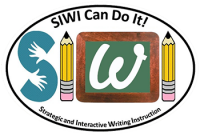Book Chapters Video review and reflection for ongoing inservice teacher professional development
Dostal, H. & Wolbers, K. (2015). Video review and reflection for ongoing inservice teacher professional development. In E. Ortlieb, L. Shanahan & M. McVee (Eds.), Video research in disciplinary literacies: Literacy research, practice and evaluation, Volume 6 (pp. 329-352). Bingley, UK: Emerald Group Publishing Limited. https://www.emeraldinsight.com/doi/abs/10.1108/S2048-045820150000006016
Tags:
professional development,
technology
In this chapter we describe how a rubric-style observation instrument for observing classroom writing instruction was used to focus and optimize collaborative video analysis sessions among teachers and researchers spread across six states. As part of a 3-year Institute of Education Sciences (IES) development grant, we used videos of classroom instruction both as data for researchers studying the nature and impact of a specific instructional approach, Strategic and Interactive Writing Instruction (SIWI), and as a vehicle for collaborative teacher professional development– for both teachers and teacher leaders. Design. By tying video analysis to a shared observation instrument, we were able to target video clip selection for discussion, and focus our analysis to support teachers across several states and school settings implementing a new approach to writing instruction. After a brief overview of the project for which videos were used, we describe the tools and protocols developed over time to ensure the efficient and powerful use of collaborative video analysis. We also share our experiences on the nature and outcomes of these collaborative sessions both in terms of teachers’ involvement and changes in practice over time. Findings. We argue that the use of a common rubric to guide video clip selection, discussion, and analysis allowed teachers to strategically engage in “data reduction” – i.e. not be overwhelmed by the amount of video data – and to use the videos as catalysts for conversations as well as evidence of what works well for individual students. As researchers, these sessions allowed us to ensure collaborative video analysis sessions were focused, efficient, and growth-oriented as well as sources of data for understanding trends in challenges and trajectories of growth for teachers implementing a new approach to instruction. Practical Implications. This work illustrates how researchers can use video for dual purposes–to conduct literacy investigations and to provide teachers with professional development involving video review and reflection.
Read in Full
